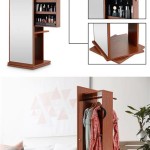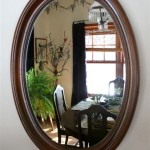Antique Oak Dresser With Swivel Mirror Cabinet: A Timeless Statement Piece
The antique oak dresser with a swivel mirror cabinet represents more than just a functional piece of furniture. It stands as a testament to craftsmanship, enduring design, and a bygone era. Often found in homes furnished with Victorian, Edwardian, or even early 20th-century aesthetics, these dressers combine practicality with visual appeal, making them highly sought after by collectors and anyone aiming to inject character into their living spaces. The rich grain of oak, coupled with the adjustable functionality of the swivel mirror, creates an aesthetically pleasing and exceptionally useful item.
These dressers are composed of several key elements contributing to their overall value and appeal. The primary material, oak, is prized for its durability and distinctive grain patterns. The dresser itself typically features multiple drawers, offering ample storage space for clothing and personal items. Above the drawers, the swivel mirror cabinet forms the focal point. This cabinet, often adorned with carved details or intricate hardware, allows for adjustable viewing angles, making grooming and dressing more convenient. The combination of these elements sets the antique oak dresser with a swivel mirror cabinet apart from its more contemporary counterparts.
Key Characteristics of Antique Oak Dressers
Several characteristics are vital in identifying and appreciating an antique oak dresser with a swivel mirror cabinet. These features help determine its age, origin, and overall value. Understanding these aspects is crucial for both potential buyers and those seeking to preserve or restore an existing piece.
Material and Construction: The use of solid oak is a defining characteristic. Antique dressers were crafted from high-quality, well-seasoned oak, contributing to their longevity and structural integrity. The construction techniques employed often involved dovetail joints, mortise-and-tenon joints, and hand-carved details. These methods ensured that the furniture was built to last. The grain patterns in the oak may also contribute to the aesthetic appeal. Look for quarter-sawn oak, which exhibits a distinctive "flake" pattern due to the way the wood was cut. The presence of these features offers strong evidence of age and quality.
Mirror and Hardware: The swivel mirror itself is an essential component. The glass used in antique mirrors often possesses a subtle "wavy" appearance due to the manufacturing processes of the time. Signs of silvering or foxing (dark spots) on the mirror's surface are common and considered part of the mirror's character. The hardware, including drawer pulls, knobs, and hinges, is often made of brass or iron and may feature intricate designs. These details provide clues about the dresser's age and origin. Matching hardware across all drawers and the mirror cabinet suggests that the piece is original and has not undergone significant alterations.
Style and Design: Antique oak dressers with swivel mirrors were produced in various styles, reflecting the prevailing aesthetic trends of the period. Victorian-era dressers may feature elaborate carvings, ornate details, and dark finishes. Arts and Crafts-style dressers, on the other hand, emphasize simplicity, clean lines, and natural wood tones. Edwardian dressers often incorporate elements of both styles. Identifying the specific stylistic influences can assist in dating and appraising the dresser.
Factors Influencing Value
The value of an antique oak dresser with a swivel mirror cabinet depends on several factors. These include the dresser's condition, age, rarity, provenance, and stylistic appeal. A dresser in excellent condition, with minimal damage and original hardware, will generally command a higher price than one that has been heavily restored or altered. Understanding these variables is essential for determining a fair market value.
Condition: The overall condition of the dresser is a crucial determinant of its value. Cracks, chips, water damage, and missing hardware can significantly decrease its worth. However, minor imperfections, such as slight scratches or age-related wear, are often considered part of the piece's character and may not significantly detract from its value. A professional assessment can help determine the extent of any damage and the potential cost of restoration. An unrestored dresser in original condition may be more valuable to some collectors than one that has been heavily restored, as restoration can sometimes diminish the antique's authenticity. However, structural soundness and stability are paramount; a dresser that requires extensive repairs may not be a worthwhile investment.
Age and Rarity: Older and rarer dressers are typically more valuable. The age of a dresser can be estimated based on its style, construction techniques, and hardware. Dressers from the Victorian or earlier periods are generally more sought after than those from the early 20th century. Rarity also plays a significant role. Dressers with unique features, unusual designs, or those produced by renowned furniture makers are often more valuable. Researching the dresser's history and provenance can help determine its age and rarity. Examining any markings or labels can provide valuable clues about its origin and manufacture.
Provenance and Maker: Knowing the history of the dresser, including its previous owners and any notable events associated with it, can significantly increase its value. A dresser with a documented history or connection to a prominent figure may be highly desirable to collectors. Similarly, dressers made by well-known furniture makers or workshops often command higher prices. Researching the maker's reputation and historical significance can help determine the dresser's potential value. Examining any labels, stamps, or signatures can provide information about the maker and the dresser's origin.
Preserving and Restoring Antique Oak Dressers
Preserving and restoring an antique oak dresser with a swivel mirror cabinet requires careful consideration and appropriate techniques. The goal is to maintain the dresser's historical integrity while addressing any structural or cosmetic issues. A professional conservator can provide expert guidance on the best approach to preserving or restoring your antique dresser.
Cleaning and Maintenance: Regular cleaning is essential for preserving the beauty and integrity of an antique oak dresser. Use a soft, damp cloth to gently wipe down the surface, removing dust and dirt. Avoid using harsh chemicals or abrasive cleaners, as these can damage the finish. Applying a high-quality furniture polish can help protect the wood and enhance its natural luster. Regularly inspect the dresser for signs of damage, such as cracks, loose joints, or insect infestation. Addressing these issues promptly can prevent further deterioration.
Repairing Damage: Repairing damage to an antique oak dresser should be approached with caution. Minor repairs, such as tightening loose screws or gluing small cracks, can often be done at home. However, more extensive repairs, such as replacing missing hardware or refinishing the surface, should be entrusted to a professional conservator. A skilled conservator will use appropriate techniques and materials to ensure that the repairs are sympathetic to the dresser's original design and construction. Avoid using modern adhesives or fillers, as these can damage the wood and detract from the dresser's value.
Refinishing and Restoration: Refinishing an antique oak dresser is a complex process that should only be undertaken by a professional conservator. Refinishing involves removing the old finish, repairing any damage, and applying a new finish. This process can significantly alter the dresser's appearance and potentially diminish its value if not done correctly. A skilled conservator will carefully assess the dresser's condition and determine the most appropriate refinishing method. They will also use high-quality finishes that are compatible with the oak and will protect the wood from future damage. Consider whether refinishing is truly necessary; in some cases, simply cleaning and polishing the existing finish may be sufficient to restore the dresser's beauty.
In conclusion, the antique oak dresser with a swivel mirror cabinet offers a timeless blend of function and aesthetics. Understanding the key characteristics, factors influencing value, and best practices for preservation and restoration allows owners and enthusiasts to appreciate and maintain these pieces for generations to come. The durable construction, intricate details, and enduring appeal make these dressers valuable additions to any home.

How To Repurpose An Old Swivel Mirror Confessions Of A Serial Do It Yourselfer

Oak Gentleman S Dresser Beveled Swivel Mirror 4 Drawers Hat Box Antiques By Owner Collectibles

Oak Gentleman S Dresser Beveled Swivel Mirror 4 Drawers Hat Box Antiques By Owner Collectibles

Antique Victorian Wishbone Style Dresser With Swivel Mirror Chairish

Antique Dresser With Mirror Oak Vanity Entryway Piece

Empire Antique Mahogany Chest Or Dresser Swivel Mirror Widdicomb

Original Mirror Antique Dressers Vanities 1900 1950 For

Oak Gentleman S Dresser Beveled Swivel Mirror 4 Drawers Hat Box Antiques By Owner Collectibles

Antique Victorian English Dresser Cabinet With Large Mirror For At Pamono

Antique Oak Ladys Dresser Low W Lrg Mirror Claw Feet Wow Long Valley Traders








